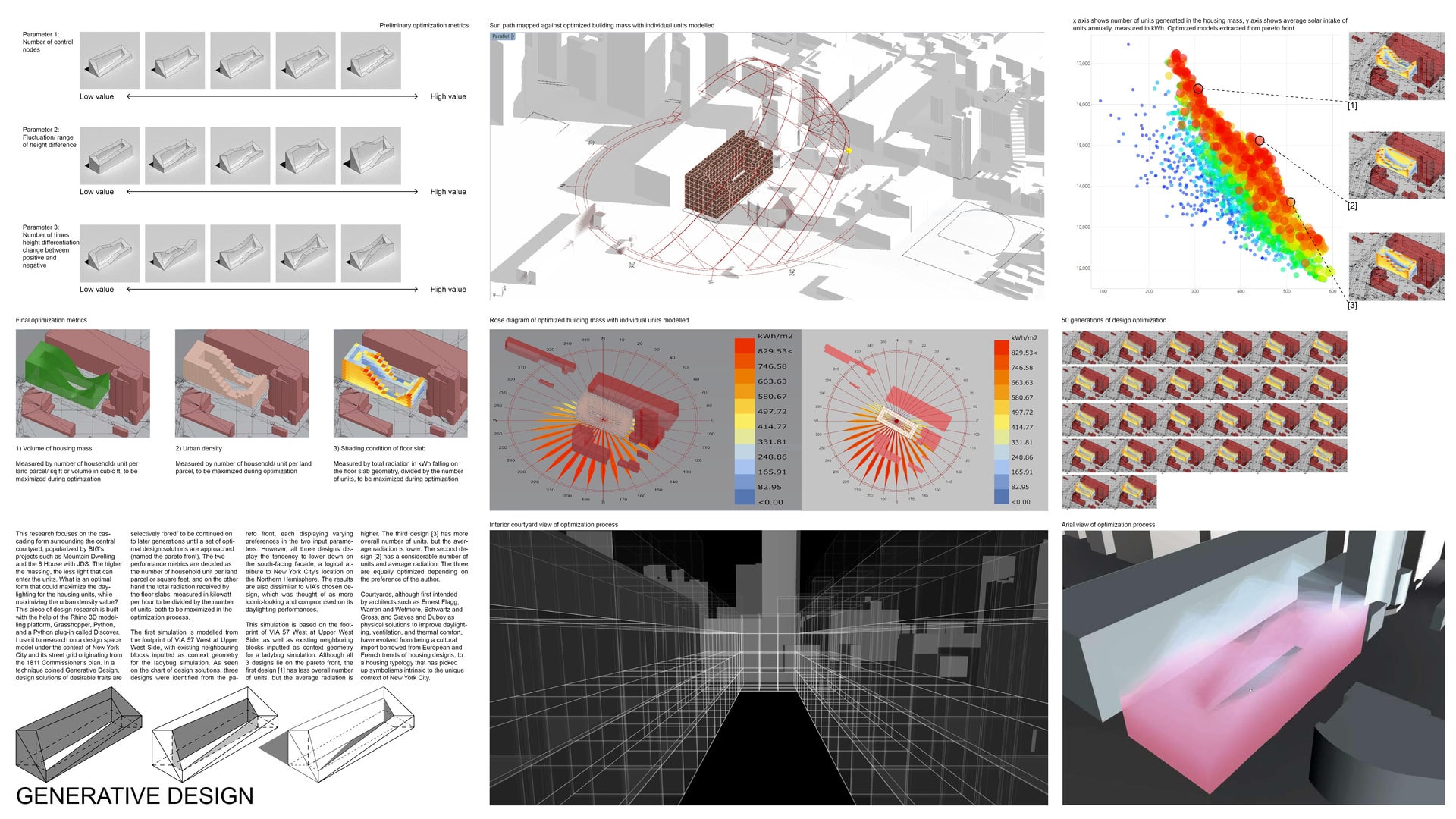Project Description
This research focuses on the cascading form surrounding the central courtyard, popularized by BIG’s projects such as Mountain Dwelling and the 8 House with JDS. The higher the massing, the less light that can enter the units. What is an optimal form that could maximize the daylighting for the housing units, while maximizing the urban density value? This piece of design research is built with the help of the Rhino 3D modelling platform, Grasshopper, Python, and a Python plug-in called Discover. I use it to research on a design space model under the context of New York City and its street grid originating from the 1811 Commissioner’s plan. In a technique coined Generative Design, design solutions of desirable traits are selectively “bred” to be continued on to later generations until a set of optimal design solutions are approached (named the pareto front). The two performance metrics are decided as the number of household unit per land parcel or square feet, and on the other hand the total radiation received by the floor slabs, measured in kilowatt per hour to be divided by the number of units, both to be maximized in the optimization process. The first simulation is modelled from the footprint of VIA 57 West at Upper West Side, with existing neighboring blocks inputted as context geometry for the ladybug simulation. As seen on the chart of design solutions, three designs were identified from the pareto front, each displaying varying preferences in the two input parameters. However, all three designs display the tendency to lower down on the south-facing facade, a logical attribute to New York City’s location on the Northern Hemisphere. The results are also dissimilar to VIA’s chosen design, which was thought of as more iconic-looking and compromised on its daylighting performances. This simulation is based on the footprint of VIA 57 West at Upper West Side, as well as existing neighboring blocks inputted as context geometry for a ladybug simulation. Although all 3 designs lie on the pareto front, the first design [1] has less overall number of units, but the average radiation is higher. The third design [3] has more overall number of units, but the average radiation is lower. The second design [2] has a considerable number of units and average radiation. The three are equally optimized depending on the preference of the author. Courtyards, although first intended by architects such as Ernest Flagg, Warren and Wetmore, Schwartz and Gross, and Graves and Duboy as physical solutions to improve daylighting, ventilation, and thermal comfort, have evolved from being a cultural import borrowed from European and French trends of housing designs, to a housing typology that has picked up symbolisms intrinsic to the unique context of New York City.
